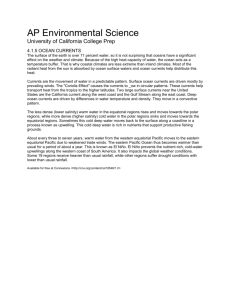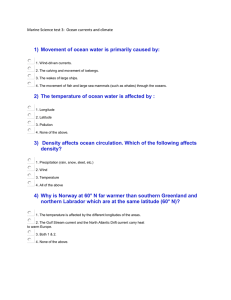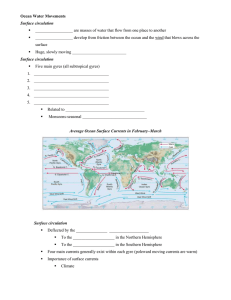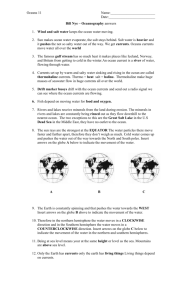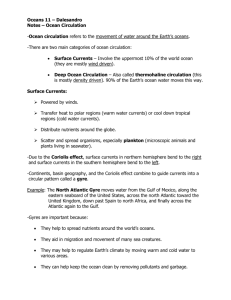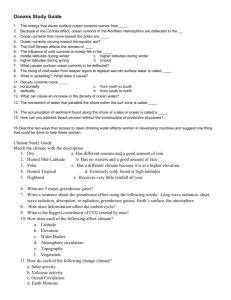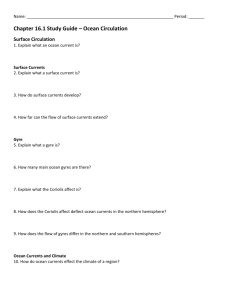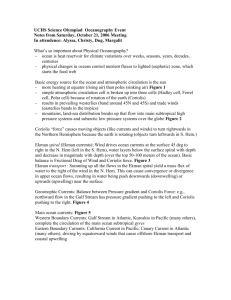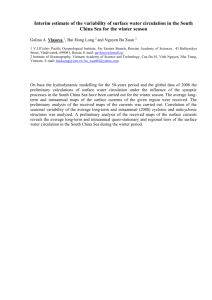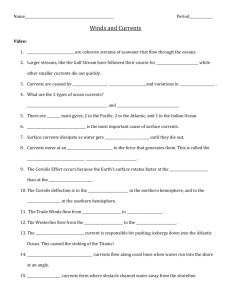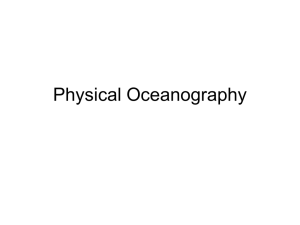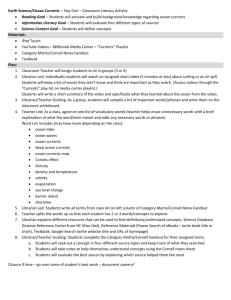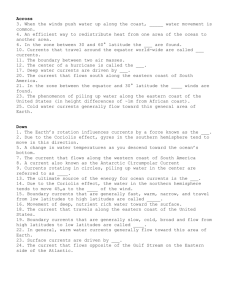Honors
advertisement
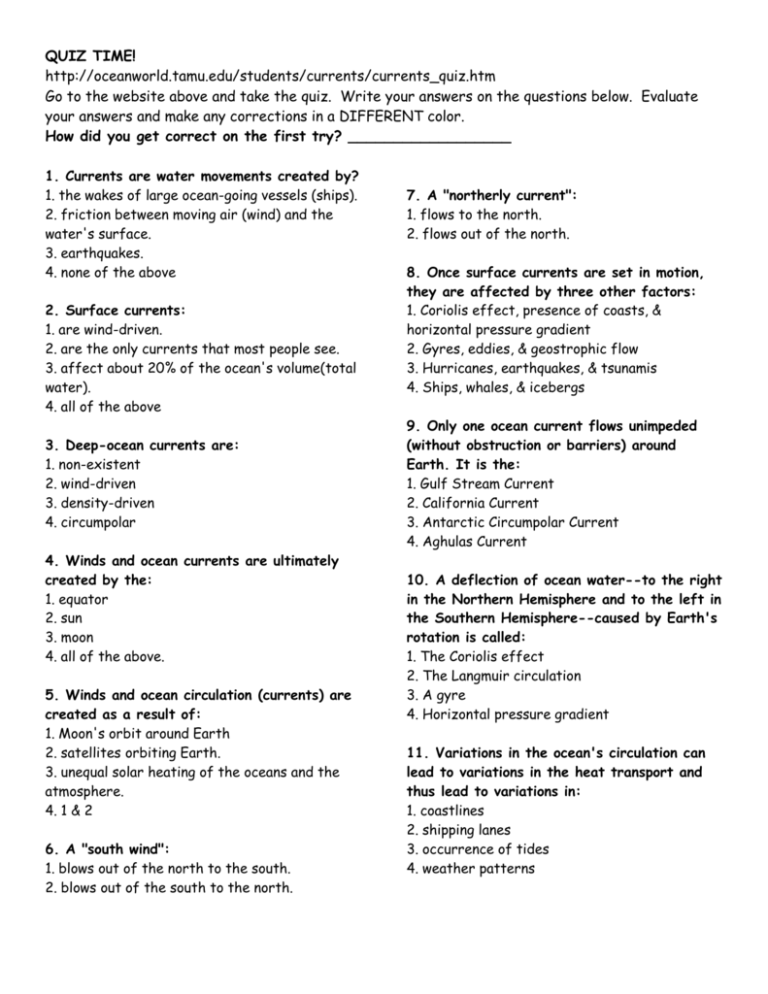
QUIZ TIME! http://oceanworld.tamu.edu/students/currents/currents_quiz.htm Go to the website above and take the quiz. Write your answers on the questions below. Evaluate your answers and make any corrections in a DIFFERENT color. How did you get correct on the first try? __________________ 1. Currents are water movements created by? 1. the wakes of large ocean-going vessels (ships). 2. friction between moving air (wind) and the water's surface. 3. earthquakes. 4. none of the above 2. Surface currents: 1. are wind-driven. 2. are the only currents that most people see. 3. affect about 20% of the ocean's volume(total water). 4. all of the above 3. Deep-ocean currents are: 1. non-existent 2. wind-driven 3. density-driven 4. circumpolar 4. Winds and ocean currents are ultimately created by the: 1. equator 2. sun 3. moon 4. all of the above. 5. Winds and ocean circulation (currents) are created as a result of: 1. Moon's orbit around Earth 2. satellites orbiting Earth. 3. unequal solar heating of the oceans and the atmosphere. 4. 1 & 2 6. A "south wind": 1. blows out of the north to the south. 2. blows out of the south to the north. 7. A "northerly current": 1. flows to the north. 2. flows out of the north. 8. Once surface currents are set in motion, they are affected by three other factors: 1. Coriolis effect, presence of coasts, & horizontal pressure gradient 2. Gyres, eddies, & geostrophic flow 3. Hurricanes, earthquakes, & tsunamis 4. Ships, whales, & icebergs 9. Only one ocean current flows unimpeded (without obstruction or barriers) around Earth. It is the: 1. Gulf Stream Current 2. California Current 3. Antarctic Circumpolar Current 4. Aghulas Current 10. A deflection of ocean water--to the right in the Northern Hemisphere and to the left in the Southern Hemisphere--caused by Earth's rotation is called: 1. The Coriolis effect 2. The Langmuir circulation 3. A gyre 4. Horizontal pressure gradient 11. Variations in the ocean's circulation can lead to variations in the heat transport and thus lead to variations in: 1. coastlines 2. shipping lanes 3. occurrence of tides 4. weather patterns








